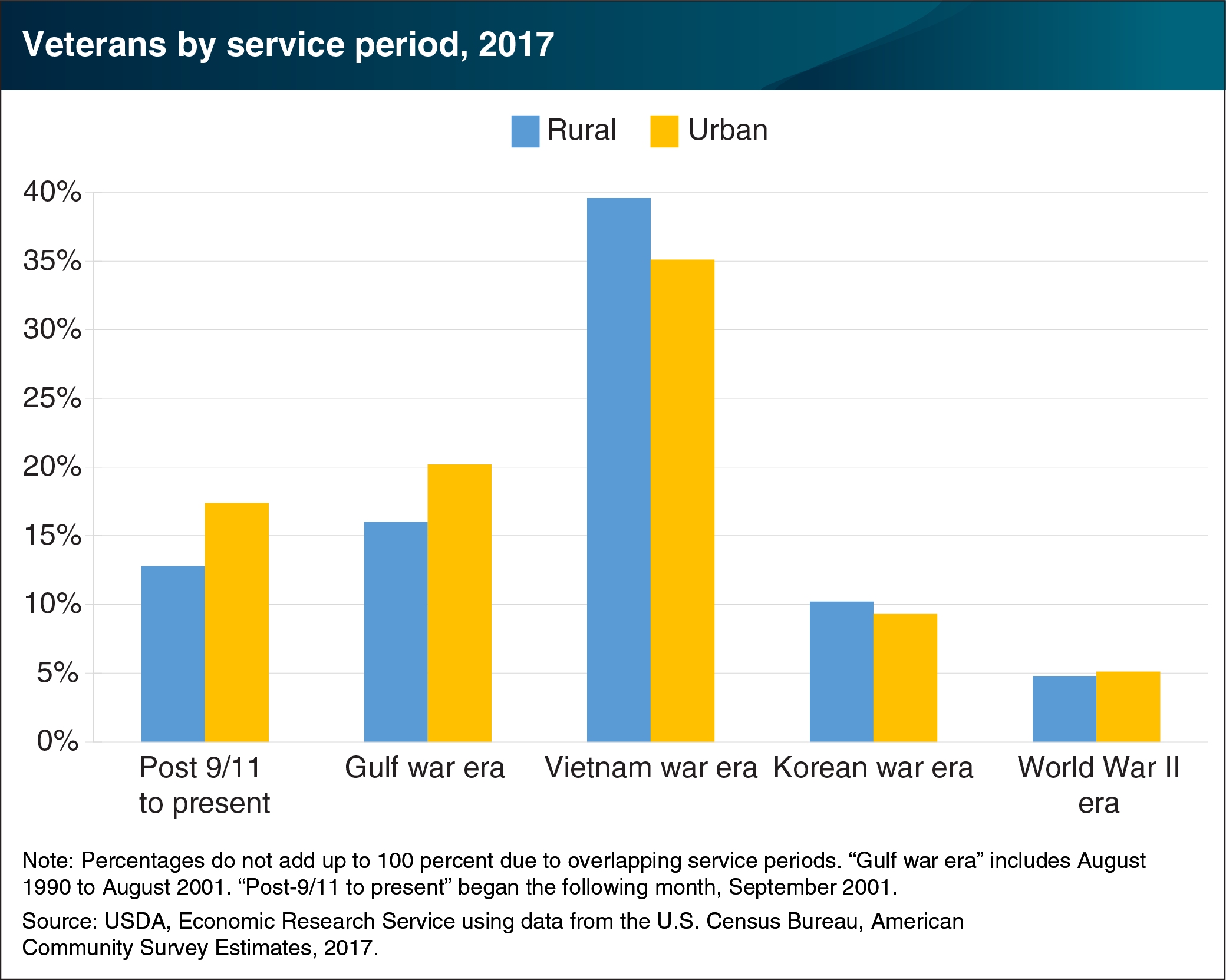Vietnam-era veterans represent the largest share of all rural veterans
- by Tracey Farrigan
- 3/29/2019

Between 1964 and 1973, an estimated 8.8 million persons were drafted or volunteered to serve in the U.S. armed forces during the period of the Vietnam war, according to U.S. Census Bureau reports. As of 2017, there were about 6.8 million Vietnam-era veterans in the United States, ranging in age from 55 to nearly 100 (average age, 68). About 1.3 million, or 19.2 percent, of them lived in rural America. In total, Vietnam-era veterans made up 39.6 percent of all rural veterans and 52.1 percent of rural veterans who served during wartime. By comparison, Vietnam-era veterans represented 35.1 percent of all urban veterans and 45.4 percent of urban veterans who served during wartime. Among rural Vietnam veterans, 4.2 percent of them also served in post-Vietnam conflicts. However, Vietnam-era veterans represent a very different sociodemographic group compared to other post-Vietnam veterans. Not only are they older on average, but they are also less diverse in gender and race. Vietnam veterans are also more likely to be disabled (although not necessarily service-related), have higher educational attainment rates, and lower poverty rates than post-Vietnam veterans. This chart uses data from the ERS data product Atlas of Rural and Small-Town America, updated February 2019.
We’d welcome your feedback!
Would you be willing to answer a few quick questions about your experience?

